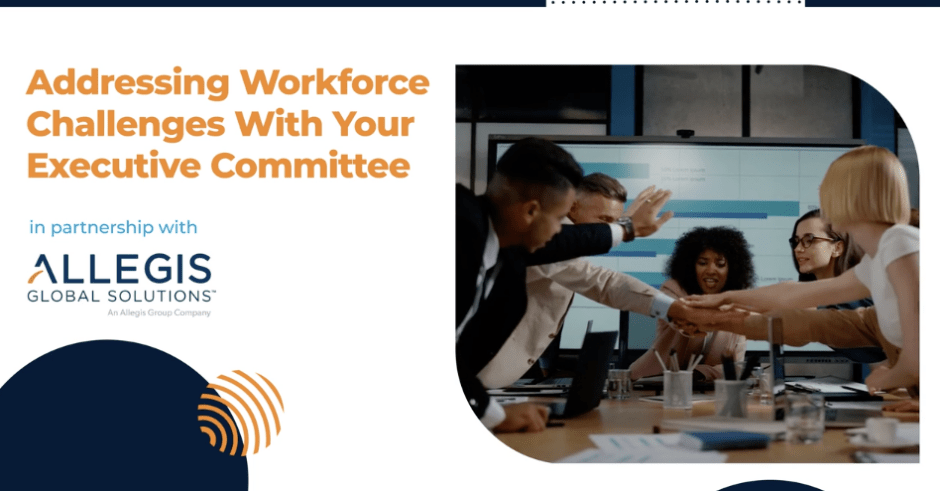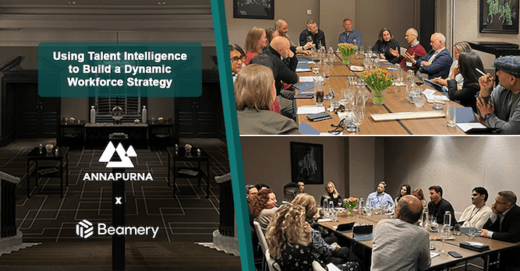Across the globe, businesses face a post-pandemic workforce crisis after millions of people left the workforce and haven’t returned. But the starting point to addressing it is within reach.
The BTN was recently delighted to partner with Allegis Global Solutions (AGS), the global leader in workforce solutions, for an exclusive roundtable event. The open and interactive session around ‘Addressing workforce challenges with your Executive Committee was hosted by Simon Bradberry (Vice President), Cat Halliwell (Executive Director, Service Excellence) and Ewan Greig (Workforce Solutions Consultant) which looked at how a new framework, some internal realignment of workforce responsibilities and a shift in HR structure can drive real transformation in how work gets done. Importantly, the ExCo plays a pivotal role in prompting needed change. This session brought about the following takeaways:
Agility and Harmonisation of Channels
For companies to act faster, more resiliently and more successfully in an increasingly complicated world different ways of thinking, management models and methods are undoubtedly required. Commonly, senior Executives are looking to empower their businesses to access the skills their organisations need to achieve goals and objectives, whilst being able to pivot to meet the evolving challenges in a fast-moving market. Leaders demand this agility and that can lead towards the notion of harmonisation of resource channels. If firms can achieve harmonised channels rather than the traditional siloes common in existing resourcing models, then they can consider all the different types of data and evaluate the market around what is happening, where skills are available, how much things cost and so identify the best way to get work done at that moment in time.
One of the many opportunities that companies can harness is to ensure that hiring managers and business leaders understand their existing employee skills base. Offering visibility is one step, but culturally companies need to drive change and acceptance that talent belongs to the company and not to individuals. To get to this point, regardless of the tool, good senior leadership and sponsorship are essential in ensuring employees are engaged and keen to learn. Understanding the sustainability of talent and helping your organisation’s talent become sustainable itself, whilst transforming is vital. Leaders talk about needing to get a ‘talent marketplace’, however, the reality is that they need to identify exactly who has access to the talent first. It comes down to looking to the future, identifying aims and working backwards to determine gaps.
Elevating the Conversation to C-Level
The point was made that a skills taxonomy is not the only starting point when it comes to breaking down the traditional siloes. Building a skills taxonomy means leaders can more easily address enterprise-wide optimization of resources, target reskilling and remove barriers around headcount and many other factors, but the practical reality of building a taxonomy is a challenge many have not yet addressed. Other thinking suggests organisations must ensure they understand what support infrastructure around the workforce needs to be built before breaking down any barriers. If firms have the right infrastructure in place, then the eventual shift can be easy and much sort after agility a reality.
Allegis Global Solution’s (AGS’s) outcome-first framework, the Universal Workforce Model, challenges legacy, predetermined approaches with a process that deconstructs the work so that you can assess workforce options objectively. Applying a workforce planning model that breaks down siloed resource channels, employee contingent workers, service providers and automation can create an agile organisation that is fit to thrive in the new world of work. To drive this transformational change in approach, then companies need to consider significant organisation-level buy in which simply comes down to the board and C-suite. Conversations need to happen between the C-suite professionals around business objectives and how they can get work done to achieve their goals despite the global workforce crisis. This is where AGS’s workforce maturity diagnostic helps collect and interpret information from across the enterprise and turn it into meaningful data to engage the C-suite. This powerful and unique tool can provide not only real insight into an organisation’s current challenges but crucially a link to a future roadmap
Tasks Vs. Role-based Hiring
Many organisations struggle to find the right talent because current models for accessing talent are flawed and these flaws have been. Firms often end up overspending on contractors based on limited data and in return budgets, timing and quality suffer. Despite this, firms are now starting to realise the importance of focusing on the work itself before they begin talking about workers, roles and vacancies and the key is to ask ‘what are we trying to achieve?’ instead of ‘who do we want to hire?’ at the very beginning of the process. If leaders and managers can shift their focus and start with the outcome in mind, that is the starting point for everything to change. Organisations need to ensure they look at tasks as opposed to the traditional role profile.
Leaders within organisations can struggle to create budgets which manage the fluctuating expenses of recruitment, training, hiring, benefits and salaries. A challenge that can act as a barrier to building a stronger workforce to get the work done. Organisations must ensure that they are planning their processes properly as it can reduce labour costs in favour of workforce redeployment and flexibility. Additionally, a move to zero-based budgeting can be considered.
Workforce planning also comes down to the importance of collaboration through culture. If leaders can create communities within their organisations and look at the outputs of what they need to achieve, then they would be able to identify what they can do differently to their standard employment.
Leaders must be able to ask themselves how they can create a relationship where there is that flexibility.
About Allegis Global Solutions
The world of work has changed. As the leading provider of workforce solutions, Allegis Global Solutions (AGS) guides companies through a transformative journey to redesign the way work gets done. We know what it takes to attract the best talent while simultaneously building and executing strategies that align workforce capabilities with the agility required to stay ahead of what’s next. With decades of experience, continuous investment in innovation, and a robust portfolio of workforce analytics and insights capabilities, we’re equipped to help companies better navigate uncertainty and complexity by empowering their ability to run, grow and transform in a way that dramatically improves business outcomes while enhancing the work experience for all.
www.allegisglobalsolutions.com



